Global and local collide in the work of Brazilian designer Brunno Jahara
At Home in the World
-
Biotipos Chairs
<em>© Andre Nazareth; courtesy of Jahara Studio</em>
-
The Batucada series on display in the Hiperbólico exhibition
<em>© Andre Nazareth; courtesy of Jahara Studio</em>
-
Transatlântica collection on display in the Hiperbólico exhibition
<em>© Andre Nazareth; courtesy of Jahara Studio</em>
-
Samba Hanging Lamps
<em>© Andre Nazareth; courtesy of Jahara Studio</em>
-
Multiplastica series on display in the Hiperbólico exhibition
<em>© Andre Nazareth; courtesy of Jahara Studio</em>
-
Hiperbólico exhibition view
<em>© Andre Nazareth; courtesy of Jahara Studio</em>
-
Jahara's Rio de Janeiro studio
<em>© Robert Holden; courtesy of Jahara Studio</em>
-
Studio view
<em>© Filippo Bamberghi; courtesy of Jahara Studio</em>
-
Multiplastica
<em>© Filippo Bamberghi; courtesy of Jahara Studio</em>
-
Transatlântica prototypes
<em>© Filippo Bamberghi; courtesy of Jahara Studio</em>
-
Studio view
<em>© Filippo Bamberghi; courtesy of Jahara Studio</em>
-
Studio view
<em>© Filippo Bamberghi; courtesy of Jahara Studio</em>
-
Inspiration wall in Jahara's studio
<em>© Filippo Bamberghi; courtesy of Jahara Studio</em>
-
Neorustica and Multiplastica designs
<em>© Luciano Mattos Bogado for L'AB/Pamono</em>
-
Neorustica Table and Sapporo Basket
<em>© Luciano Mattos Bogado for L'AB/Pamono</em>
-
Brunno Jahara
<em>© Luciano Mattos Bogado for L'AB/Pamono</em>
-
Hiperbólico exhibition view
<em>© Luciano Mattos Bogado for L'AB/Pamono</em>
-
Julia Chaise for Wallpaper Handmade
<em>© Luciano Mattos Bogado for L'AB/Pamono</em>
-
Slat Bench
<em>© Luciano Mattos Bogado for L'AB/Pamono</em>
-
Transatlântica
<em>© Luciano Mattos Bogado for L'AB/Pamono</em>
-
Transatlântica sketches
<em>© Luciano Mattos Bogado for L'AB/Pamono</em>
When I met Brunno Jahara at the SP-Arte fair in São Paulo last April, the first thing I noticed was his perfect Italian… with just a hint of a Venetian accent. Brazil is home to the largest Italian population outside of Italy, but it’s not so common here to find fluent speakers of my native language. Even before I knew the back story, it was instantly clear that this young Carioca designer had led a cosmopolitan life propelled by an optimistic and curious nature.
It turns out that Italy was just one of many stops on Jahara’s nearly global tour, accomplished already at only 35 years old. And while he’s been steadily leaving his mark worldwide—with shows in major venues like La Triennale di Milano, Salone del Mobile, Centre Georges Pompidou, Philips de Pury London, Designersblock in Tokyo, and various far-flung design weeks, as well as high-profile features in Architectural Digest, Casa Vogue, Wallpaper, and The New York Times, just to name a few—it seems that his rich experiences abroad have left an indelible impression on his work, which, by the way, has just been honored in a major retrospective entitled Hiperbólico presented at the prestigious Museu Histórico Nacional in Rio de Janeiro.
Jahara’s congenital openness led him to invite me to visit one of his two studios, the one in the lively and bohemian Pinheiros district of São Paulo (the other is in Rio). The two-story house is tidy and full of light, color, and pattern—calling to mind the recent neologism “Brazilian-cozy.” At first glance, you see what you might expect from any young, creative professional in his mid-30s, but upon closer inspection, you notice that every object punctuating the space incorporates a clever, eccentric twist that forms a bridge between the past and the present, between Brazil and the rest of the world: traditional materials taking surprising, contemporary forms; familiar forms in unexpected materials; banal, everyday consumer goods elevated to useful art.
Jahara has lived and worked seemingly everywhere—University of Brasilia, the Istituto Universitario di Architettura di Venezia, Benetton’s famous Fabrica studio, and even India and Japan—before setting up his studio at home in 2009. Yet the more he travels, the more he’s compelled to use design as a vehicle to discover the common ground; the universal.
Marcello Pisu: Tell us about your recent exhibition Hiperbólico. What does the name mean?
Brunno Jahara: Hiperbólico refers to a mathematical function that produces a curve—a hyperbola—a form that I use extensively. The show displays ten years of my work, from my first prototype made in collaboration with an Italian glassmaking master, to other more recent prototypes and unique pieces realized during my many journeys at home and abroad. The show is curated by Marcelo Vasconcellos, one of the few design curators we have in this country, who now focuses on contemporary design after years of specializing in modernism. The show in Rio just closed a few weeks ago, but it will travel to other Brazilian cities, São Paulo and Brasilia, where I’ve also studied.
MP: Brasilia is a World Heritage Site designed by pioneering architects [Oscar Niemeyer, Lúcio Costa, and landscape architect Roberto Burle Marx]. How did studying in a truly iconic site of modernist design influence your work?
BJ: Studying in Brasilia for five years was incredible. I had the pleasure to meet one of the pillars of the city’s construction, artist and tile master Athos Bulcão. I also found endless inspiration in the city itself. Since Brasilia is only about 60 years old, everything you see is new, and everything you do there feels like an experiment that nobody has ever done before. The openness makes you feel that there is ample room for creation.
The buildings are only about six stories high and have lots of space between them. Nature is always present, thanks to the 180-degree sky, lots of greenery, and the huge lake. The university has wide hallways full of light. Brasilia is designed to make you think, and the aesthetics of the city still lives in my work, even if in non-obvious ways.
MP: After your experience in modern, spacious Brasilia, you moved to ancient, dense Venice to complete your studies in architecture. What was the motivation behind such a change in environment?
BJ: I need to live in places that spark my curiosity and make me want to understand them. And Venice is a very closed and mysterious city if you’re not from there. I shared a studio with other artists, and I worked for institutions like Fondazione Bevilacqua La Masa. I was living a very Venetian life—with my studio at the Giudecca island where I met several artists and friends who showed me secret places only known to locals—so I was lucky to be exposed to a very unique culture usually out of reach for tourists.
MP: You’ve also lived in the Netherlands, Japan, India, and finally back to Brazil. What have you kept of your Brazilian design heritage?
BJ: What inspires me most is the popular, vernacular side Brazilian design, especially how people who are not very connected to design improvise utensils or tools in everyday life; how people build their own objects out of necessity both in cities and in nature. I feel this is a very Brazilian tendency, but because we have an extremely diverse country, it’s at the same time so connected to other cultures as well.
If you visit native people in remote areas, you find beautifully crafted, almost Japanese-looking things made from natural elements. Then if you visit certain urban areas, like in São Paulo, there are almost no natural elements at all. And when you go to my neighborhood in Rio—Botafogo—the monkeys come inside and steal from your apartment. “Brazilian style” means a lot of different things.
MP: Can you give us some examples of how the different places you've visited come together in your creations?
BJ: It is never about the place, but about the culture. When I’m designing something, I want it to work for everyone, in every market. Living in Japan, Europe, and India, each culture taught me something new about global lifestyles—what is shared and what is different—even if I can’t help but bring in a Brazilian point of view. In my Batucada series, I mix aspects of my own heritage with modernist principles. These simple and practical lamps, glasses, and plates in hand-hammered, sandblasted aluminum were inspired by specific samba percussion rhythms you hear during Carnival parties, very often played with cans or tin pots. Each of the pieces is laser-signed and bears the statement “This is an unique piece full of imperfections.” My Multiplastica series is based on the classic idea of a serviteur muet but completely realized with a mix of recycled plastics and bowls of every color—which means each piece is one of a kind. My Transatlantica collection looks like a very traditional kind of Portuguese porcelain, but there’s a twist: I elaborated new shapes for the water jars and two other containers and introduced contemporary decorative patterns using guns and popsicles.
MP: The innovative use of materials is your trademark. How do you choose them?
BJ: Here in Brazil, using wood is common sense because it is an abundant natural resource of great quality. But I prefer to experiment with alternative materials, to find ways to make objects in an unconventional way, especially using recycled aluminum, scrap wood, and post-consumer plastics for example. By no means does this mean I avoid traditional materials like porcelain or stone, which have a long lasting value and beauty. But I try to mix materials in an unexpected way. Right now I’m working with bamboo and acrylic for tables and shelves, called Palafitas.
I feel that designers have a responsibility to the materials they choose and need to sensitize the industry to this ethos. Designer Sergio Rodrigues often says he has killed the jacaranda tree with his chairs. And actually you cannot find this tree anymore in the Amazonas.
MP: When I see your masterful Liquid Light—basically three glass lamps melted into one another—I can’t help but wonder why you choose to work in the realm of design rather than art.
BJ: In Venice I was working with contemporary art, doing a lot of installation work with this kind of material approach. Art is definitely freer because it doesn’t require a function. But I love the challenge of creating something both beautiful and functional.
-
Text by
-
Marcello Pisu
Based in Berlin, São Paulo, and L.A, Marcello is an Italian writer-curator who's way into art, science, technology, and urbanism. His current projects include Moon by Ai Weiwei and Olafur Eliasson and a new art space in São Paulo.
-
Designbegeisterte hier entlang
Stray Paintball Chair von David Elia
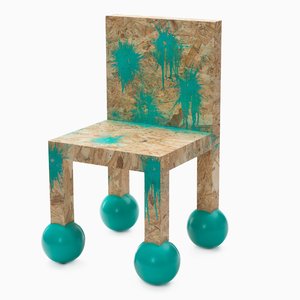
Stray Bullet Side Table von David Elia, 2011
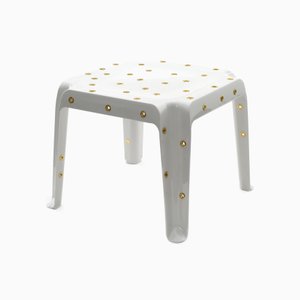
Große Multiplastica Domestica Etagere in Lila von Brunno Jahara
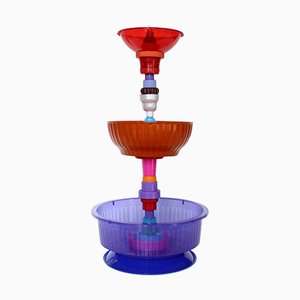
Große Multiplastica Domestica Etagere in Rosa von Brunno Jahara

Große Multiplastica Domestica Etagere in Grün von Brunno Jahara
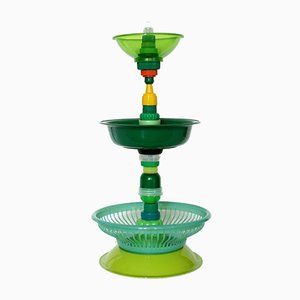
Kleine Multiplastica Domestica Etagere in Grün, Weiß & Blau von Brunno Jahara
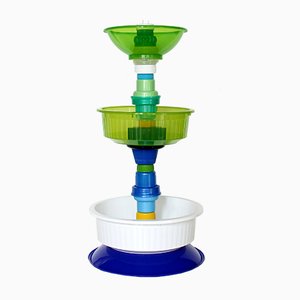
Cadeira Amarela Stuhl von Paulo Goldstein Studio
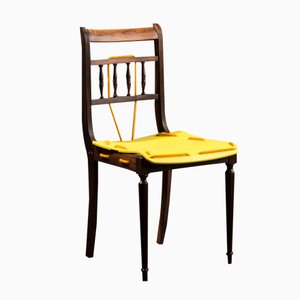
Scarcity Stuhl von Paulo Goldstein Studio

Cadeira Azul Stuhl von Paulo Goldstein Studio

Reparierter Regisseurs Stuhl von Paulo Goldstein Studio
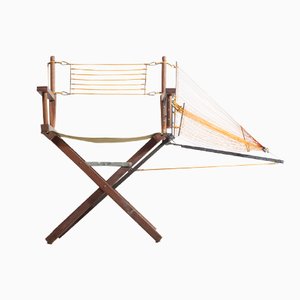
Stray Bullet Chair in Schwarz und Silber von David Elia

Stray Bullet Vase by David Elia
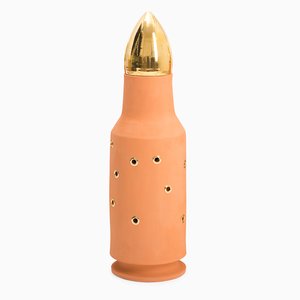
Stray Bullet Kissen von David Elia
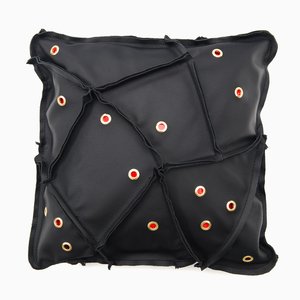
Conterrâneos Box by Brunno Jahara
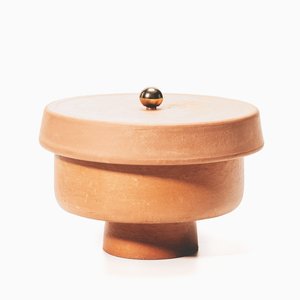
Large Conterrâneos Fruit Tray by Brunno Jahara

Medium Conterrâneos Fruit Tray by Brunno Jahara

Conterrâneos Table Lamp by Brunno Jahara
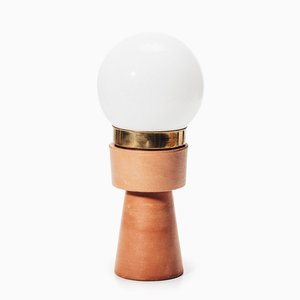
Conterrâneos Candle Holder by Brunno Jahara

Multiplastica Domestica Medium Tiered Fruit Bowl in Blue by Brunno Jahara
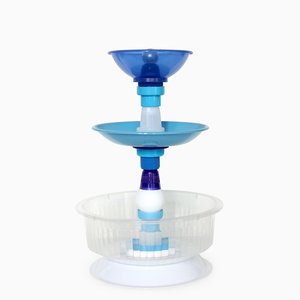
Multiplastica Domestica Lamp in Red by Brunno Jahara

Transatlântica Tall Pot by Brunno Jahara























 Brunno Jahara at work
© Filippo Bamberghi / Courtesy of Jahara Studio
Brunno Jahara at work
© Filippo Bamberghi / Courtesy of Jahara Studio
 Batucada Vases
© Filippo Bamberghi; courtesy of Jahara Studio
Batucada Vases
© Filippo Bamberghi; courtesy of Jahara Studio
 Liquid Light
Courtesy of Jahara Studio
Liquid Light
Courtesy of Jahara Studio
